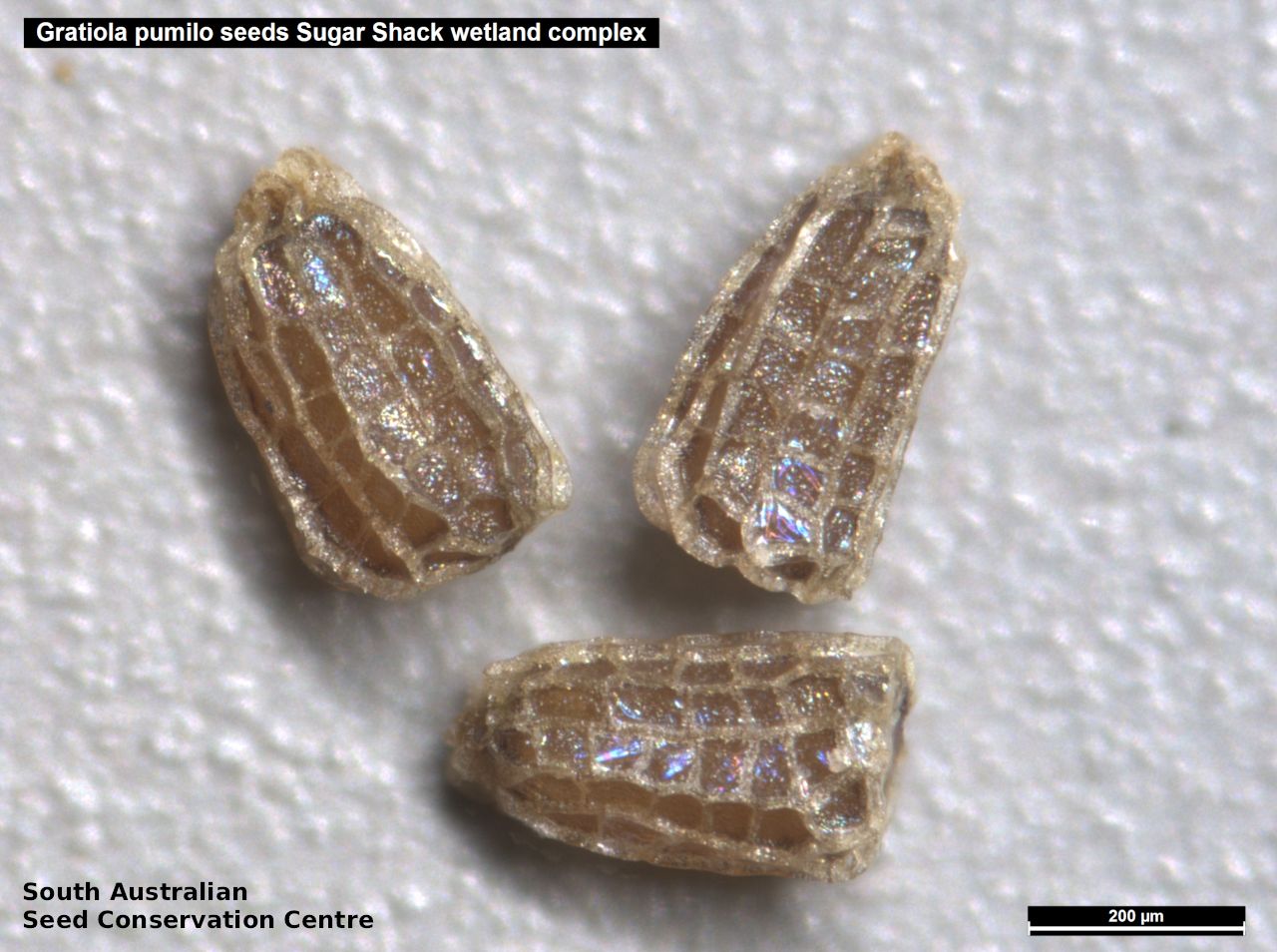











Botanical art
Prior names
Gratiola peruviana var. pumila
Gratiola sexdentata, questionably
Gratiola pumila, orth.var.
Etymology
Latin 'gratia dei' grace of god, medieval name for the species Gratiola officinalis used in medicine and Latin 'pumilio' a dwarf
Distribution and status
Grows in seasonally inundated, damp ground Rare
Herbarium regions: Murray, Southern Lofty, South Eastern
NRM regions: Adelaide and Mount Lofty Ranges, South Australian Murray-Darling Basin, South East
AVH map: SA distribution map (external link)
Plant description
Small, slender, erect, rarely decumbent perennial herb, 4-35 cm high. Leaves narrow-ovate to narrow-ovate-elliptic, 0.5-2.5 x 0.1-0.8 cm; sessile, glabrous or with scattered, tiny to coarse, eglandular hairs. Flowers single in bract axils; corolla to 7�9 mm long, white, sparsely hairy. Flowering November - January, April. Fruits are capsule broad-ovoid, 2.7-6 mm long, topped by the caducous style 1.5-1.8 mm long Seeds are seed oblong-cylindrical, reticulate, dark brown, 0.4-0.7 mm long
Seed collection and propagation
Collect seeds between November and January.
| Location | No. of seeds (weight grams) | Number of plants | Date collected | Collection number Collection location | Date stored | % Viability | Storage temperature |
|---|---|---|---|---|---|---|---|
| MSB | 22,000 (1.37 g) | 50+ | 16-Jan-2006 | DJD396 South Eastern | |||
| BGA | 54,000 (1.31 g) | 100+ | 21-Jan-2011 | J.Quarmby Southern Lofty | 1-Jan-2012 | 95% | -18°C |
| BGA | 133,000 (2.57 g) | 50+ | 21-Jan-2011 | DJD2117 Southern Lofty | 1-Jan-2012 | 90% | +5°C, -18°C |
| BGA | 36,000 (0.38 g) | 10 | 28-Nov-2011 | MJT360 Murray | 1-Nov-2012 | 90% | -18°C |
Number of plants: This is the number of plants from which the seeds were collected.
Collection location: The Herbarium of South Australia's region name.
% Viability: Percentage of filled healthy seeds determined by a cut test or x-ray.